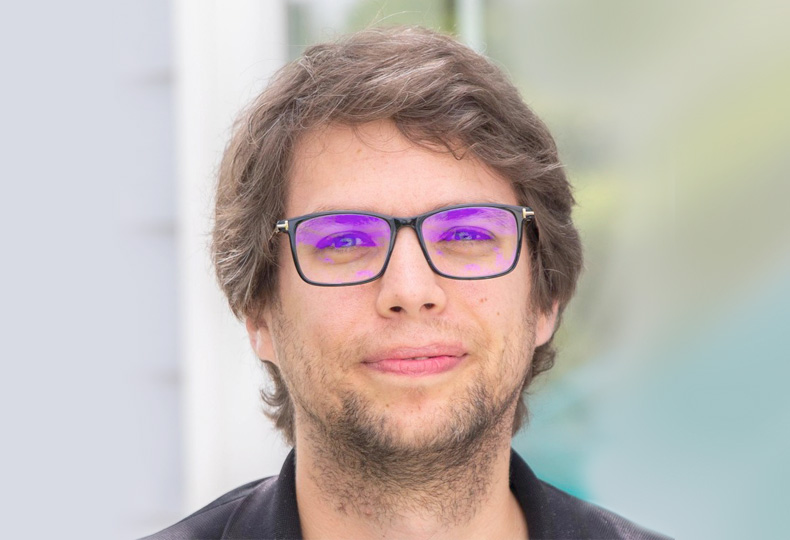Thomas Nowak, at the famous Institut universitaire de France (IUF)

He has just been appointed a junior member of the Institut Universitaire de France (IUF) to a fundamental chair. Portrait...
His research areas
- Distributed algorithms
- Synthetic biology
- Discrete event systems
His work deals with various dynamic networks, where "agents" communicate with each other. The analysis of natural phenomena can help to develop algorithms with remarkable performances.
The flight of birds towards a common direction
Thomas Nowak has characterised the speed at which a consensus can be reached, for example for birds to decide to fly in a common direction, depending on their environment. This result applies effectively to certain classes of dynamic networks.
Communication between bacteria and viruses
However, the study of birds presents many difficulties from an algorithmic point of view, which led Thomas Nowak to the simplest creatures in biology: bacteria and viruses. He has thus entered the field of synthetic biology, where microorganisms are genetically modified to perform algorithms designed by researchers.
The aim is to study micro-biological systems and design new bacterial circuits by analysing them as distributed systems.
Considering bacteria and viruses as distributed systems allows us to both understand and modify nature.
Many bacteria live within other organisms, such as all those found along our digestive system," explains Thomas Nowak. In the long term, we hope that they will be able to run algorithms for medical purposes, whether for diagnosis or therapy. For the time being, we are implementing the basic building blocks of communication between microorganisms so that they can reach consensus on the scale of large populations. Direct medical applications will arrive in about ten years' time.
Thomas Nowak is thus exploring the various ways of communicating data held by a sub-part of a population of bacteria to all the congeners present. This again amounts to converging towards a consensus, but it is also a form of signal amplification. Microorganisms are given Boolean values, in the form of 0 or 1, of which it is desired that only one remains at the end.
While in a computer these operations are carried out by electronic components, such as amplifiers and transistors, this role is played here by small strands of DNA. Thomas Nowak's algorithms lead to competition: if two opposing bacteria meet, they kill each other.
One might think that creating a little more of one would be enough to ensure that it wins the final consensus, but the interplay of duplications and natural deaths requires more fine-tuning of the algorithm parameters than that.
Thomas Nowak's appointment to the IUF and, two weeks apart, his promotion to university professor will enable him to further his work and move towards future medical applications.
